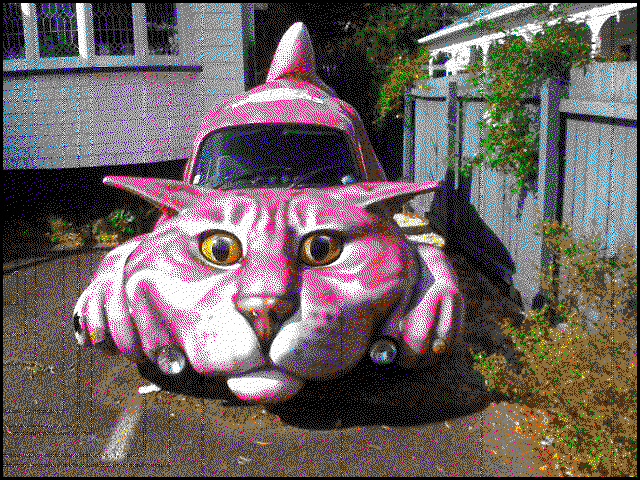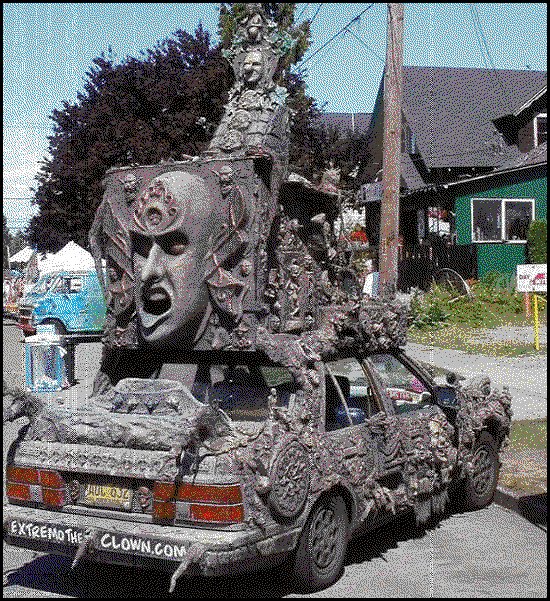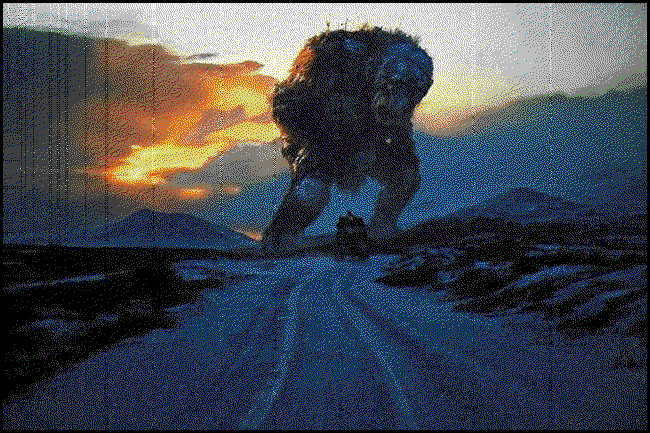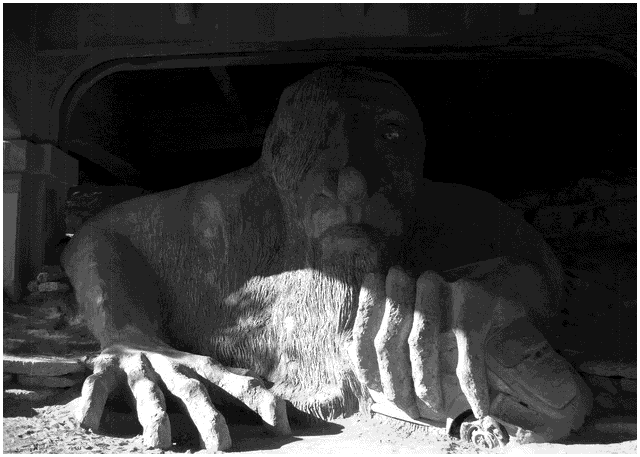
Film Review
Transformers 3:
Dark of the Moon
Trollhunter

Every Sunday, I take my Downser son Aaron out for lunch, then an outing of some sort, generally a movie, and then dinner, before we return to his group home. The movie is chosen by a process of negotiation. One recent Sunday, I lobbied for the Norwegian creature feature "Trolljegeren" (The Trollhunter), but instead we ended up at Aaron's first choice, the new Michael Bay extravaganza "Transformers 3 ---Dark of the Moon." We took in "Trolljegeren" on another day.For those who have spent the last 20 years in a Tibetan lamasery, let me quickly summarize the back-story of the Transformer series, from their start as a line of toys, through umpteen TV cartoons, finally reaching the present incarnation as bloated film spectacles. The basic theorem is that there are several races of giant extra-terrestrial robots running around our galaxy, and when not busy demolishing planets, these robots hide out on earth disguised as our own cars! I have long suspected something of the sort, particularly in the case of SUVs. On the other hand, I would be amazed if my own little Nissan Versa were to transform into anything more threatening than a toaster-oven, while the Fiat-600 I drove long ago would barely qualify to disguise itself as a Mr. Coffee.
The present film's plot, to stretch that word's meaning to the breaking point, had something to do with a war between good giant extra-terrestrial robots and bad giant extra-terrestrial robots, providing for 2-1/2 hours of CGI mayhem. The details sketched in the few wisps of exposition quite escaped me, since the noise-canceling earphones I wear to all these productions mercifully blot out every line of dialogue, and reduce the noisier parts to a soft background rumbling conducive to sleep. When I awoke, refreshed, a giant extra-terrestrial robot (one of the good ones, I suppose) was declaiming something to the puny figure of the film's human star. At this point Aaron exclaimed "jack-rabbitt!" indicating that the film was about to end. "Jack-rabbitt," I should explain, is Aaron's highest film accolade, equivalent to the Golden Leopard at Locarno or the Silver Bear at the Berlinale.

A concern with burning social issues --- such as giant extra-terrestrial robots disguised as cars --- has a long history in American film. Think of the 1930s, when Hollywood's greatest blockbuster was a daring exposé that General Sherman's Union army had burned Atlanta back in 1864. Or 2009, when "Avatar", another Hollywood blockbuster, raised public consciousness about the perils of mining the precious mineral unobtainium ... at a time when the resident tribe of 9-foot tall blue cat-people doesn't like the idea.In Europe, too, there is a tradition of socially conscious cinema. The new wave French films drew attention to the lives of under-represented minorities such as hit-men (played by Alain Delon) or visiting American gun-molls (played by Jean Seberg). "Trollhunter," a recent entry in this category, takes up the plight of the trolls ... a minority group that has long been marginalized in northern Europe. It squarely addresses the question of what the Social Democratic welfare state can do to best include these historical outcasts in the social fabric.

Trolls follow specific, traditional occupations, such as turning dead animals into loam, kidnapping children and maidens, and throwing stones at churches. However, when times are slack in these industries, trolls ought to qualify for unemployment benefits just like anyone else. Unfortunately, they generally lack a personnummer, the numerical code by which the Nordic states keep track of citizens and deliver benefits. Senior trolls should also receive a retirement pension, but inasmuch as they live about a thousand years, nobody knows whether they should retire at the age of 650, 700, or 750. In short, trolls constitute what social workers call an "under-served population.""Trollhunter" follows the footsteps of Norwegian social worker Hans Jespersen as he searches the forests and mountains for trolls to sign them up for their government benefits. In one episode, he acquaints an old troll living in the traditional hollowed-out tree stump with the opportunity to obtain a state housing allowance. In a larger stump, he finds an entire troll family of a mother, father, and troll child. Since the mother and father troll have never been married to one another, they might qualify for the single parent allowance, and Hans helps them fill out the application forms for Transitional benefit, Child care benefit, and Educational benefit.
In the film's exciting climax, the intrepid social worker discovers an underground cavern where the troll king has imprisoned an entire harem of kidnapped maidens. Hans enjoys a short dalliance with one of the maidens, informing her about the national dental insurance scheme, when the troll king unexpectedly returns, casts a spell on the maiden, and eats Hans.
At the film's conclusion, Aaron awarded it a rating of "Sølv Pinnsvin" (Silver Porcupine in Norwegian), and added "Jeg likte denne her" (I liked this one). Drawing on my tiny store of Norwegian repartee, I replied "Hvor er herretoalettet, vær så snill?" (where is the men's room please?), to which Aaron responded "Det er ikke langt" (it's not far). With that, we clapped each other on the back, donned our bowler hats, and did a soft-shoe routine out to the lobby. There, we joined up with my little Nissan Versa, which was awaiting us at the snack counter disguised as a popcorn popper, and headed home. "Hvorfor," Aaron mused as we sped away, "er din Nissæn en pøpcørn pøpper?" What could I say but "Jeg vet ikke."

--- Dr Phage